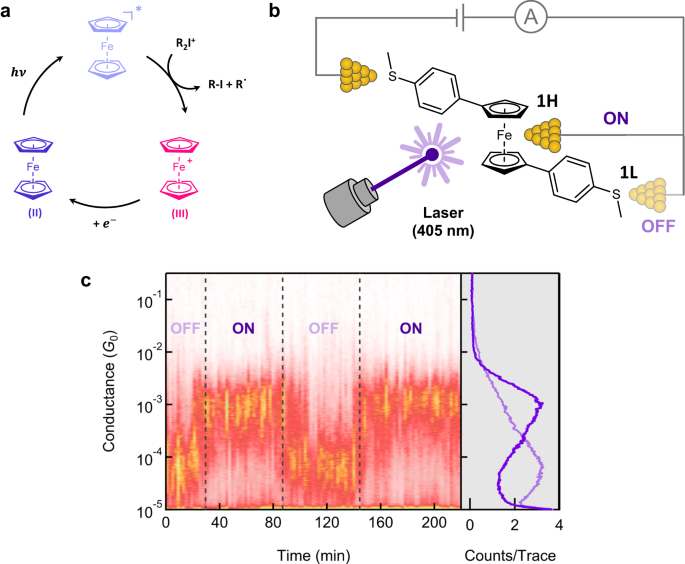2024-03-01 コロンビア大学
<関連情報>
- https://www.engineering.columbia.edu/news/using-light-precisely-control-single-molecule-devices
- https://www.nature.com/articles/s41467-024-45707-z
フェロセンをベースにしたFe-Au結合単一分子接合の光酸化駆動形成 Photooxidation driven formation of Fe-Au linked ferrocene-based single-molecule junctions
Woojung Lee,Liang Li,María Camarasa-Gómez,Daniel Hernangómez-Pérez,Xavier Roy,Ferdinand Evers,Michael S. Inkpen & Latha Venkataraman
Nature Communications Published:16 February 2024
DOI:https://doi.org/10.1038/s41467-024-45707-z

Abstract
Metal-metal contacts, though not yet widely realized, may provide exciting opportunities to serve as tunable and functional interfaces in single-molecule devices. One of the simplest components which might facilitate such binding interactions is the ferrocene group. Notably, direct bonds between the ferrocene iron center and metals such as Pd or Co have been demonstrated in molecular complexes comprising coordinating ligands attached to the cyclopentadienyl rings. Here, we demonstrate that ferrocene-based single-molecule devices with Fe-Au interfacial contact geometries form at room temperature in the absence of supporting coordinating ligands. Applying a photoredox reaction, we propose that ferrocene only functions effectively as a contact group when oxidized, binding to gold through a formal Fe3+ center. This observation is further supported by a series of control measurements and density functional theory calculations. Our findings extend the scope of junction contact chemistries beyond those involving main group elements, lay the foundation for light switchable ferrocene-based single-molecule devices, and highlight new potential mechanistic function(s) of unsubstituted ferrocenium groups in synthetic processes.



